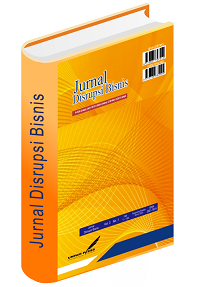Semiotic Analysis of the Political Economy Communication Message of the Nation's Founder in the Implementation of Article 33 of the 1945 Constitution
DOI:
https://doi.org/10.32493/drb.v7i4.42525Keywords:
Semiotics, Ferdinand De Saussure, Article 33 of the 1945 ConstitutionAbstract
"This research aims to find out the semiotic analysis of the political economic communication messages of the founding fathers of the nation contained in the implementation of article 33 of the 1945 Constitution." The data collection technique used by researchers to collect data uses the documentation method, namely tracing various sources such as theses, journals, articles, books and certain notes related to the research theme. This research uses a descriptive qualitative methodology in the form of a literature study using a critical paradigm using Ferdinand De Saussure's semiotic theory. The results of this research are (1) From a political economic perspective, the Indonesian economy must be structured jointly by the state through the government, private sector, cooperatives and society on the basis of the principle of kinship where the state is the leader in decision making. (2) From a political economic point of view, the State must be able to create BUMN and Ministries for important production branches that are directly related to people's livelihoods and ensure that the supply chain is unbroken and the prices are affordable for all levels of society. (3) From a political economic point of view, the State must ensure the security of land ownership for all parties, including traditional communities, civil society, the private sector, as well as the state itself, in accordance with applicable rights and laws. The state must be able to provide land for residence to its citizens who do not own land in accordance with adequate portions of their needs. The state must control clean water sources for household needs and the state must control and own shares in mining companies with a portion of more than 50 percent of the total mining wealth in Indonesia. The state must have complete ownership of half of all the total number of mines in Indonesia to be managed by the nation's children themselves for the prosperity of the Indonesian people.
References
Ardana, dkk. (2001). Metodelogi Penelitan Pendidikan, Malang: UMM.
Budiman, Kris .2011. Semiotika Visual Konsep, Isu, dan Problem Ikonisitas. Yogyakarta: Jalasutra.
Cangara Hafied. 2004. Pengantar Ilmu Komunikasi. Jakarta: Raja Grafindo
Danesi, Marcel. 2010. Pengantar Memahami Semiotika Media. Terjemahan A. Gunawan Admiranto. Yogyakarta : Jalasutra
Herman Soewardi, Koperasi: Suatu Kumpulan Makalah, Bandung: Ikopin, 1989, h. 413.
Hoed, Benny H. 2011. Semiotika dan Dinamika Sosial Budaya. Depok: Penerbit Komunitas Bambu.
Sobur, Alex. 2009. Semiotika Komunikasi, PT. Remaja Rosda Karya, Bandung.
Stoke, Jane. 2003. How To Do Media and Cultural Studies: Panduan Untuk Melakukan Penelitian Dalam Kajian Media dan Budaya. Sage Publication.
Sugiyono.2017.”Metode penelitian Kualitatif”: Untuk Penelitian yang Bersifat: Eksploratif, Enterpretif, Interaktif dan Konstruktif. Alfabeta,CV.Bandung.
Sugiyono. 2016. Metode Penelitian Kuantitatif, Kualitatif, dan R&D. Alfabeta, CV. Bandung. Zoest, Aart Van.1993.Serba-Serbi Semiotika..Jakarta:Gramedia.
Downloads
Published
How to Cite
Issue
Section
License
Copyright (c) 2024 Suryadi Marthadinata, Iskandar Zulkarnain

This work is licensed under a Creative Commons Attribution-NonCommercial 4.0 International License.
Penulis yang menerbitkan jurnal ini menyetujui persyaratan berikut:
- Penulis memiliki hak cipta dan memberikan jurnal hak publikasi pertama dengan karya yang secara simultan dilisensikan di bawah Creative Commons Attribution License yang memungkinkan orang lain untuk berbagi karya dengan pengakuan kepengarangan karya dan publikasi awal dalam jurnal ini.
- Penulis dapat masuk ke dalam pengaturan kontrak tambahan yang terpisah untuk distribusi non-eksklusif versi jurnal yang diterbitkan dari karya tersebut (misalnya, mempostingnya ke repositori institusional atau menerbitkannya dalam sebuah buku), dengan pengakuan atas karya awalnya publikasi dalam jurnal ini.
- Penulis diizinkan dan didorong untuk memposting pekerjaan mereka secara online (misalnya, dalam repositori institusional atau di situs web mereka) sebelum dan selama proses pengajuan, karena dapat menyebabkan pertukaran yang produktif, serta kutipan yang lebih awal dan lebih besar dari karya yang diterbitkan ( Lihat The Effect of Open Access).

This work is licensed under a Creative Commons Attribution-NonCommercial 4.0 International License.







.png)

